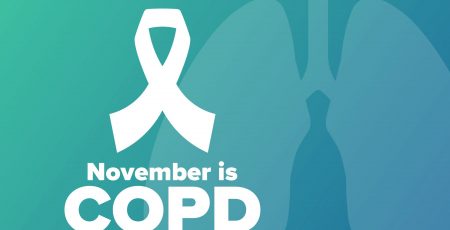11 Aug Using Your Own Oximeter To Measure Oxygen Saturation
This is part two of a three-part article. Click here for part 1: “Altitude & Oxygen Levels.” Click here for part 3: “Breathing Techniques.”
By Mary Burns, RN, BS
PERF Executive Vice President
Many patients, who have gone through pulmonary rehab programs and gotten sophisticated about understanding the importance of their oxygen saturation, purchase their own oximeter. If you obtain your doctor’s prescription, you should be able to deduct it from your income tax. On rare occasions, an insurance company will reimburse the purchase cost if you get a prescription. It is worth checking on. However, many oximeters are now available in sports stores or online.
If you wish to purchase an oximeter, there are several on the market. For many years we’ve had the best experience with the little Nonin Go2 Achieve sports model. It can be purchased online from Nonin or Amazon; cost runs from $80 to $100. It comes with a lanyard so it can be worn around your neck like a pendant. The oximeter shows your heart rate in addition to your oxygen saturation. Don’t get them mixed up!
Oximeters are great for patients who have gone through pulmonary rehab and are knowledgeable about oxygen, oxygen saturations and oximeters. Their physicians are sometimes comfortable with having their patients titrate their oxygen according to their saturations, especially when traveling to different altitudes. If, however, you haven’t gone through rehab, or your program hasn’t taught you about oximetry, there are some concerns about using this technology without a thorough understanding of its limits. You should definitely get your physician’s advice on this. Remember, oxygen is a drug, and the dose (the liter flow) should be prescribed by your doctor and changed only with your physician’s advice and permission.
The first thing you need to remember is that the oxygen saturation provided by an oximeter does NOT have the accuracy of an arterial blood gas (ABG), a test done on blood usually taken from an artery in your arm. However, oximeter readings are a lot less difficult (and less painful!) to obtain, great for providing trends. They are certainly a lot less expensive.
Several things can affect the accuracy of the reading that you get with a finger oximeter, including some nail polishes, (especially blue, green, black or metallic ones), poor circulation, and having had a cigarette in the past few hours. If you smoke, we think you shouldn’t waste your time and money buying an oximeter! The oximeter can’t tell the difference between the oxygen (O2) and the carbon monoxide (CO) in your blood, thus giving you a falsely high indication of the amount of oxygen circulating in your blood if you have been smoking!
A normal saturation, at sea level, is about 98%. Many patients with COPD will have an oximetry reading in the mid or low 90’s, but that is fine. People without pulmonary disease also have low oximeter readings when they go to a higher altitude. In Denver (5,000 feet altitude), a normal saturation is about 90%.
You should aim to have an oximetry reading above 88%, but don’t worry if it jumps around and briefly drops below that. It can be due to your activity or circulation, a bent finger or arm, cold hands, or even due to holding your breath rather than exhaling with effort. Consistently having levels drop below 88% is of concern and should be reported to your physician.
Most physicians prefer that you maintain an oximetry reading of at least 90%, keeping it between 90 and 94%. The preferred level depends on your individual condition and the type of pulmonary problem that you have. This is where you turn to your pulmonary physician for advice specific to you. Remember, each of you is an individual with different needs.
If you are observant, you will find that pacing yourself helps keep your oxygen level up. You will probably find that your oximetry readings will be high, even “normal,” when you are sitting, and that they will drop with activity. If you are really smart, you will find that your breathing pattern can make a big difference in your oximetry levels.
Next week: Breathing Techniques





Pingback:Altitude, Oxygen Levels and Oximetry | PERF 2nd Wind Blog
Posted at 12:22h, 29 August[…] is part one of a three-part article. Click here for part 2: “Using Your Own Oximeter.” Click here for part 3: “Breathing […]
Pingback:Breathing Techniques | PERF 2nd Wind Blog
Posted at 12:29h, 29 August[…] of a three-part article. Click here for part 1: “Altitude & Oxygen Levels.” Click here for part 2: “Using Your Own Oximeter.” To read the entire article on PERF’s main website, click […]